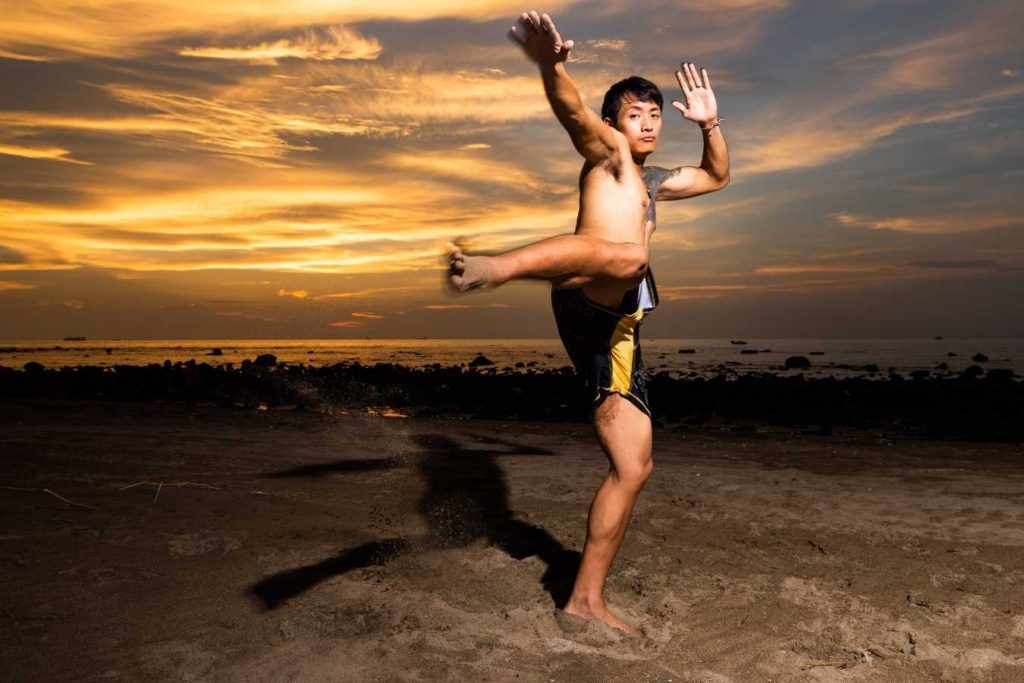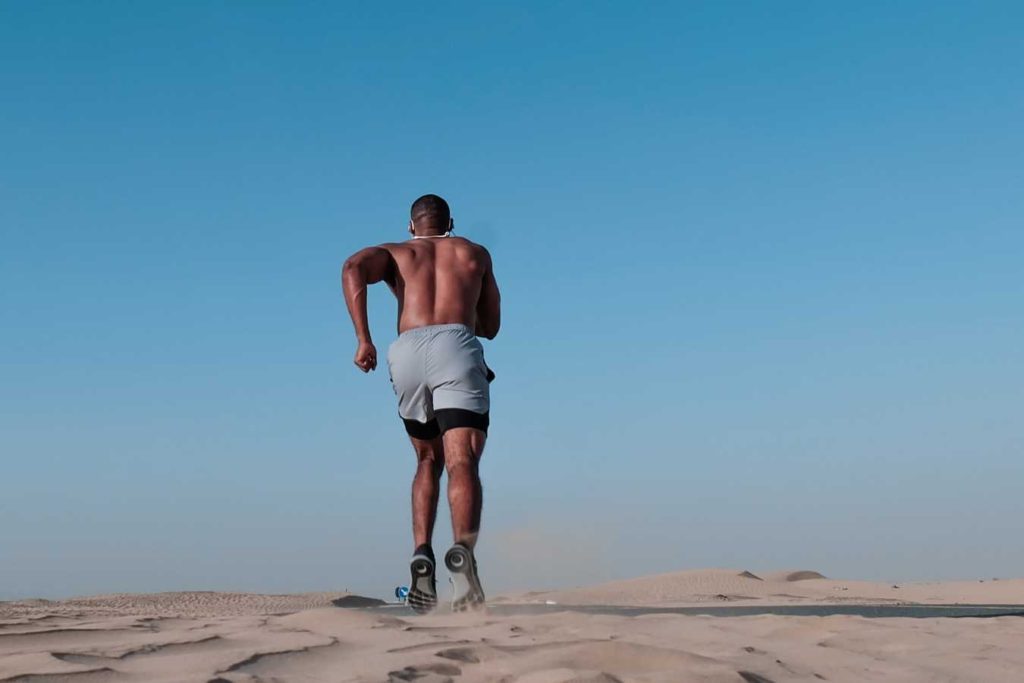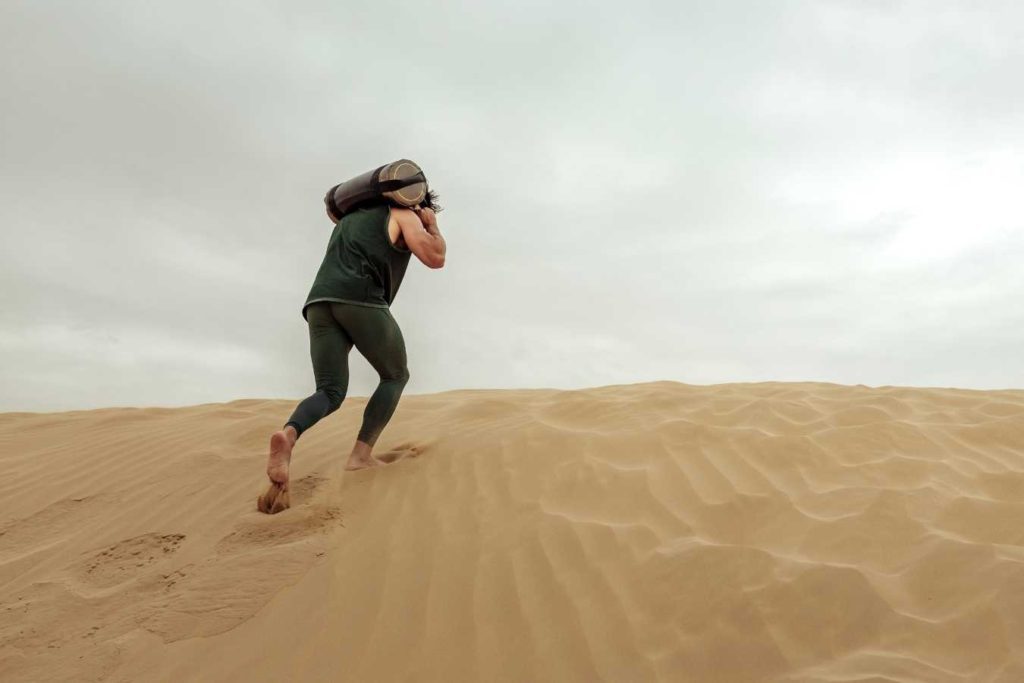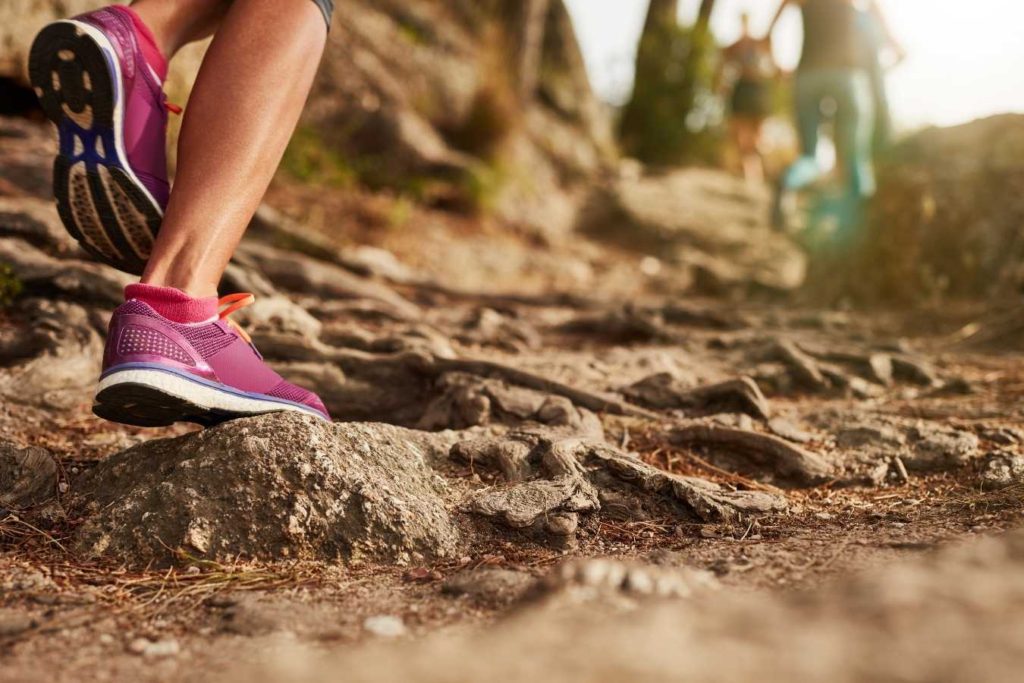You’ve probably seen the many viral Instagram clips of trainers and athletes performing random fast feet and “agility” type drills in the sand. While it may look fascinating on camera, it may not be serving the purpose it was intended for.
Sand workouts don’t develop explosiveness as you would on a firmer surface such as grass because you can’t effectively use the elastic energy stored in the tendons through the stretch-shortening cycle leading to sub-optimal plyometric, jump, and sprint performances.
But why does sand training not allow you to become an explosive beast? And if sand training isn’t as effective as training on firm ground for explosiveness, then what are the benefits of training in the sand?
Does Training In Sand Make You Explosive?

Explosive or plyometric sand workouts are the antithesis of developing explosiveness. If you’ve read my “Plyometrics For MMA” article, plyometric training is about short ground contact times turning an eccentric (lowering) phase into a concentric (raising) phase as quickly as possible.
The overarching term for this is reactive strength. Generally, all movements that fall under 0.25 seconds of ground contact time are categorized as reactive strength.
To develop reactive strength, the stretch-shortening cycle (SSC) has to be trained to efficiently store and utilize elastic energy in these short time frames.
For activities such as jumping, reactive strength isn’t as important. Rather these would be classed as “slow SSC” activities or explosive strength.
While these tasks don’t require using elastic energy in very short time frames on the ground, they still require the ability to efficiently use elastic energy.

How to Dominate Every Fight with Raw, Explosive Power No One Can Match
Discover the underground blueprint that has quietly turned MMA hopefuls into legends, using nothing but sheer, brute force and bulletproof conditioning techniques.
So how do we enhance the SSC? By training jump and plyometric activities with the corresponding short ground contacts.
Unfortunately, sand workouts don’t allow efficient utilization of the SSC. Unlike hard surfaces, sand is a soft surface that deforms when you are jumping or changing direction essentially leaking elastic energy.
Rather than the tendon acting as a spring-like mechanism, the sand forces the muscle to work harder due to the lack of tendon stretch.
This is a great video demonstrating what happens when you perform a sharp change of direction in the sand.
https://www.instagram.com/p/CJerJPJlk62/
If your main goal is to develop explosiveness, then you must perform the majority of your explosive training on a solid surface.
Does Training In Sand Make You Faster?

Because sand is a soft surface, which absorbs a lot of shock, it has a negative effect on sprint speed and jump performance [5].
Slower sprint times, while caused by the soft surface and not maximizing elastic energy use, also seem to be caused by a greater range of motion at the ankle which has been linked to potential inside shin pain and Achilles tendon soreness [5].
Benefits Of Sand Training

Occasional sand workouts can provide some benefits to the combat sports athlete.
While these won’t be developing reactiveness and explosiveness, sand training constitutes greater energy expenditure when running compared to grass meaning you work “harder.” [2]
This allows for greater intensity of a workout without causing additional detriment to the following days training [4].
This means any extra conditioning performed off the mats could be performed on the sand at the same relative intensity but have greater overall intensity due to the soft surface.
Further, those who struggle with knee pain may benefit from training on sand due to the reduced impact forces [3].
In fact, this particular study found reductions in muscle damage and soreness after performing plyometrics in the sand [3].
What About Other Surfaces?

Interestingly, in youth soccer players, greater improvements were found in vertical jump, long jump, drop jump, maximal kicking speed, sprint time, and change of direction time when performing plyometrics on six different surfaces compared to just performing plyometrics on grass [1].
These surfaces were grass, dirt, sand, wood, gym mat, and tartan track. Now, these soccer players were very young so extrapolating these findings to the older combat sports population is difficult.
However, if you don’t have a strong plyometric training background, I believe you can benefit from varied surfaces for a limited period of time.
Training on varied surfaces can also be a great way of developing ankle and knee robustness protecting you from injury.
There are certain attributes that need to be trained in order to have good reactive ability. One is being able to “pre-tense” the muscles around the ankle before impacting the ground.
This allows effective use of the SSC as the muscles stay “tight” and only the tendon rapidly stretches then recoils like a rubber band.
Training on different surfaces gives immediate feedback on whether or not this is happening. On a hard surface, you won’t jump or rebound as high if you don’t have pre-tension. On a soft surface, you will literally be stuck on the ground.
Having this pre-tension not only enhances reactive ability but protects the foot and ankle at impact. By using varying surfaces, you can train this skill while undergoing different muscle activation patterns.
References
1. Ramirez-Campillo, R., Álvarez, C., García-Pinillos, F., García-Ramos, A., Loturco, I., Chaabene, H., & Granacher, U. (2020). Effects of combined surfaces vs. single-surface plyometric training on soccer players’ physical fitness. The Journal of Strength & Conditioning Research, 34(9), 2644-2653.
2. Pinnington, H., & Dawson, B. (2001). Running economy of elite surf iron men and male runners, on soft dry beach sand and grass. European journal of applied physiology, 86(1), 62-70.
3. Impellizzeri, F. M., Rampinini, E., Castagna, C., Martino, F., Fiorini, S., & Wisloff, U. (2008). Effect of plyometric training on sand versus grass on muscle soreness and jumping and sprinting ability in soccer players. British journal of sports medicine, 42(1), 42-46.
4. Binnie, M. J., Dawson, B., Pinnington, H., Landers, G., & Peeling, P. (2013). Effect of training surface on acute physiological responses after interval training. The Journal of Strength & Conditioning Research, 27(4), 1047-1056.
5. Binnie, M. J., Dawson, B., Pinnington, H., Landers, G., & Peeling, P. (2014). Sand training: a review of current research and practical applications. Journal of sports sciences, 32(1), 8-15.

